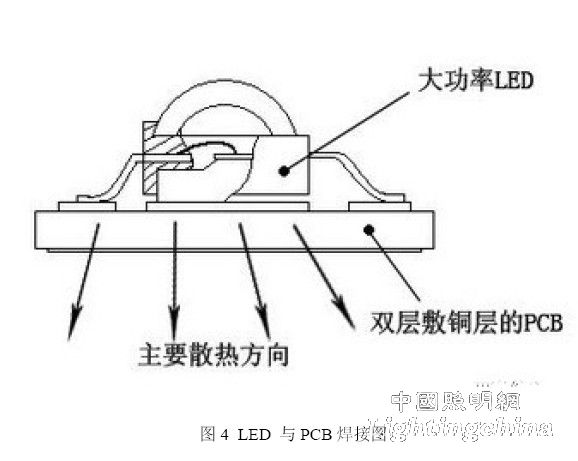In recent years, high-power LEDs have developed rapidly, with large improvements in structure and performance, increased output, and reduced prices. A single-power ultra-high-power white LED with a power of 100W has also been developed. Compared with previous years, there has been considerable progress in luminous efficiency. For example, Edison's 20W white LEDs in the past few years have a luminous flux of 700 lm and a luminous efficiency of 35 lm/W. The 100W white LED developed in 2007 has a luminous flux of 6000 lm and a luminous efficiency of 60 lm/W. For example, Lumiled's recently developed K2 white LEDs are compared with their I and III series products. It can be seen from the table that the K2 white LED has a large improvement in luminous flux, maximum junction temperature, thermal resistance and external dimensions. Cree's new XLamp XR to E cool white LEDs have a maximum brightness QS of 107 to 114 lm at 350 mA. These high-performance LEDs with good performance have created conditions for the development of LED white lighting fixtures.
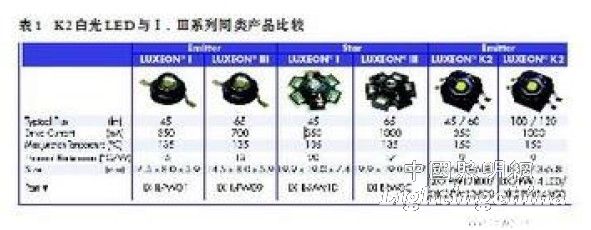
In the past few years, various white LED lighting fixtures were mainly made of low-power Φ5 white LEDs. For example, a bulb of 1 to 5 W, a tube lamp of 15 to 20 W, a street lamp of 40 to 60 W, a projection lamp, and the like. These lamps use tens to hundreds of Φ5 white LEDs, which have complicated production processes, poor reliability, high failure rate, large case size, and insufficient brightness. In order to improve the above shortcomings, in recent years, high-power white LEDs have been gradually used to replace the Φ5 white LEDs to design new lamps. For example, a street light made of 18 2W white LEDs would require hundreds of Φ5 white LEDs.
In addition, with a 1.25W K2 series white LED, it can be made into a strong light flashlight with a luminous flux of 65lm, and the illumination distance can reach several tens of meters. It is impossible to use Φ5 white LEDs.
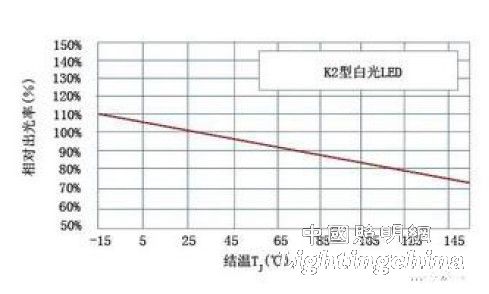
Figure 1 Relationship between junction temperature TJ and relative light output rate
Lamps made with high-power LEDs are much more expensive than incandescent, fluorescent, and energy-saving lamps, but their energy-saving effects and longevity are much higher than other lamps. If LED lighting is used in public places such as street lighting systems and waiting halls, large department stores or supermarkets, high-end hotel lobby, etc., the one-time investment is higher, but the long-term power saving effect and economy are worth looking forward to. of.
At present, 1~3W high-power white LED is mainly used as the illumination lamp because of its high luminous efficiency, low price and flexible application.
First, the heat dissipation problem of high-power LED
LED is a photovoltaic device. In the working process, only 15% to 25% of the electrical energy is converted into light energy, and the rest of the electrical energy is almost converted into thermal energy, so that the temperature of the LED rises. In high-power LEDs, heat dissipation is a big problem. For example, if a 10W white LED has a photoelectric conversion efficiency of 20%, 8W of electric energy is converted into thermal energy. If no heat dissipation measures are taken, the core temperature of the high-power LED will rise rapidly, when its junction temperature (TJ) When the temperature rises above the maximum allowable temperature (typically 150 ° C), high power LEDs may be damaged by overheating. Therefore, in the design of high-power LED lamps, the most important design work is the heat dissipation design.

In addition, in the heat calculation of a general power device (such as a power IC), as long as the junction temperature is less than the maximum allowable junction temperature (typically 125 ° C). However, in the high-power LED heat dissipation design, the junction temperature TJ requirement is much lower than 125 °C. The reason is that TJ has a great influence on the light output rate and life of the LED: the higher the TJ, the lower the light output rate of the LED and the shorter the life.
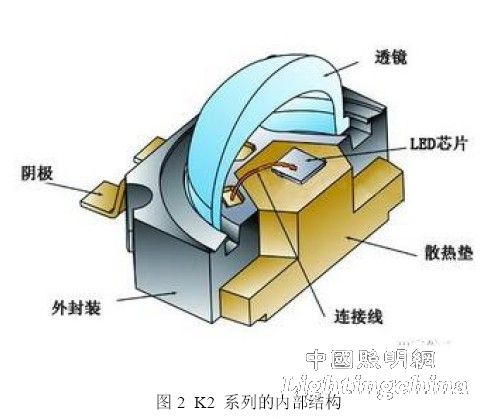
Figure 1 is a plot of junction temperature TJ versus relative light output for a K2 series white LED. At TJ=25°C, the relative light output is 1; when TJ=70°C, the relative light output is reduced to 0.9; when TJ=115°C, it is reduced to 0.8.
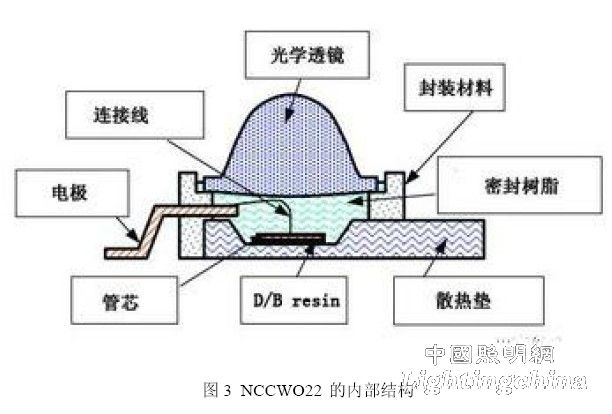
Table 2 shows the relationship between the junction temperature TJ of the high-power white LEDs given by Edison and the lifetime when the brightness is attenuated by 70% (the life of different LED manufacturers is not the same, only for reference).
Figure 3 The internal structure of NCCWO22 can be seen in Table 2: the lifetime is 90,000 hours at TJ = 50 °C; the life is reduced to 34,000 hours at TJ = 80 °C; and the lifetime is only 13,300 hours at TJ = 115 °C. TJ should propose the maximum allowable junction temperature value TJmax in the heat dissipation design. The actual junction temperature value TJ should be less than or equal to the required TJmax, ie TJ≤TJmax.
